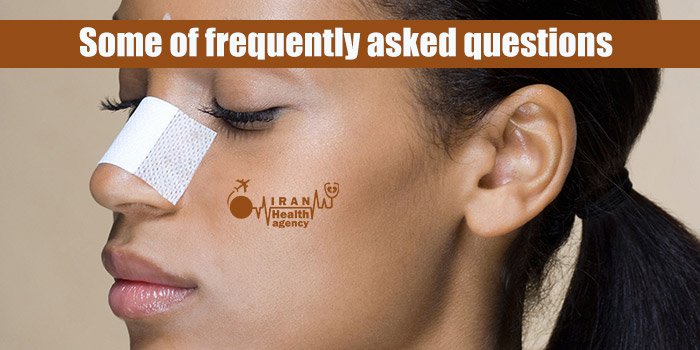A brief overview for managing swelling
Here are some tips for managing swelling after rhinoplasty surgery:
- Swelling is normal and to be expected after a nose job. It may worsen in the first 2-3 days before gradually improving. It can take up to a year for all the swelling to fully resolve. Be patient.
- Use cold compresses on your nose and the area around the eyes to help reduce swelling and bruising. Do this for 10-20 minutes a few times a day. Don’t use ice directly, as it can damage the skin.
- Sleep with your head elevated on 2-3 pillows to minimize facial swelling. Avoid sleeping on your side or stomach.
- Avoid strenuous activity or exercise for at least 2 weeks after surgery. This will help prevent increased swelling and bleeding.
- Take over-the-counter pain medication like acetaminophen or ibuprofen to help with discomfort and swelling. Avoid aspirin which can increase bleeding.
- Drink plenty of fluids and eat a sodium-rich diet to reduce swelling. Broths, soups, and foods with ginger can help. Avoid alcohol and salty foods.
- Don’t wear glasses or sunglasses directly on your nose while it’s swollen. Tape the bridge or wear glasses off the nose.
- Use nasal saline sprays and avoid blowing your nose to prevent damage and bleeding. If you must sneeze, do so with your mouth open.
- Follow your surgeon’s post-op instructions closely. Call your doctor if you have excessive bleeding, pain, fever, or rapidly increasing swelling.
Tips to Reduce Swelling
- Sleep with your head elevated on 2-3 pillows.
- Use cold compresses on the nose and eyes for 10-20 mins daily.
- Avoid strenuous activity for at least 2 weeks
- Take over-the-counter pain medication as needed
- Drink lots of fluids and eat a low-sodium diet
- Avoid glasses sitting directly on the nose
- Use the nasal saline spray and avoid nose blowing
Swelling Timeline
- Days 1-3: Maximum swelling occurs
- Week 1: The nose will remain quite swollen
- Week 2: Swelling and bruising start improving
- Week 3-4: Swelling decreases significantly, but nostrils may still be swollen
- 2-6 Months: Continued gradual improvements in swelling
- 6-12 Months: Swelling largely resolves, but subtle changes still occur as healing completes
Be patient through the swelling process. Contact your surgeon if you have concerns. With proper aftercare, your new nose will be revealed over the first year! Let me know if you need any clarification or have additional questions.
Read more: Rhinoplasty recovery: Tips, Swelling and Timeline Day by Day
Swelling after Rhinoplasty: How to deal with it?
Getting Rhinoplasty can be stressful when you’re dealing with post-op swelling. Knowing when swelling is expected and when it’s a concern can help you stay calm and make a recovery plan.
When Swelling is Normal:
- Swelling peaks at days 2-3, remains significant for 1-2 weeks, and gradually subsides over 3-12 months.
- The upper nose and tip are often the most swollen. The bridge, sides, and nostrils may swell too.
- Swelling may fluctuate, getting better and worse sporadically.
- Swelling may temporarily worsen with activity, weather changes, salt intake, or medication.
When to Relax:
- If swelling increases gradually and steadily improve overall.
- If swelling is limited to the nose area and doesn’t extend to the cheeks or eyes.
- If swelling is paired with expected bruising, that’s also improving.
- If you don’t have other concerning symptoms like fever, vomiting, or vision issues.
When to Worry:
- If swelling occurs suddenly or proliferates within a few hours or days.
- If swelling is severely asymmetric or extends beyond the nose.
- If swelling is accompanied by new bleeding, severe nasal obstruction, or vision changes.
- If you have signs of infection like fever, chills, redness, or foul drainage.
Contact your surgeon right away if you have worrying swelling or symptoms. Some swelling is expected with rhinoplasty but excessive swelling can indicate complications to address quickly. Stay diligent but don’t panic – your doctor can advise the next steps.
you can see this article to learn how is the best place to sleep after Rhinoplasty
Read more: Sleeping position after Rhinoplasty
Pros and cons of swelling after Rhinoplasty?
Pros:
- Swelling is a normal part of the healing process. It’s a sign your body is responding to the trauma of surgery.
- Swelling helps stabilize tissues and prevent excessive movement or distortion of the nose as it heals.
- As swelling resides, the new nose shape is gradually revealed. This is an exciting process for patients to see the final result.
- Swelling often results in temporary cosmetic improvement as the nasal tissues look smoother and softer when swollen.
Cons:
- Excessive swelling can be uncomfortable, painful, or impact breathing through the nose.
- Swelling makes it harder to get an accurate idea of your final nasal appearance after surgery.
- The fluctuation in swelling can be frustrating as the nose appearance changes daily.
- Swelling can temporarily distort the look of the nose or make results look worse than they will be long-term.
- Complete resolution of swelling takes up to a full year. This requires patience from the patient.
- Swelling may cause emotional distress if patients focus only on the swollen temporary appearance.
Swelling is a mainly positive part of the healing process that signifies the body is responding as it should to Rhinoplasty. As long as it resolves on a normal timeline, patients can be reassured it is not a cause for concern. Patience is key.
FAQ:
Does the amount of bruise and swelling related to the doctor?
The amount of bruises and swelling depends on multiple reasons. The surgeon’s technique and proficiency play the most crucial role.

How can I recognize swelling from the natural shape of my nose after Rhinoplasty?
Time will clear everything; after Rhinoplasty for two years, the natural shape of the nose will appear. Sometimes temporary swelling and occasionally permanent defects can only be removed by revision Rhinoplasty in Iran.
How can I speed up the swelling after Rhinoplasty?
While you can’t rush the swelling process entirely, you can help reduce it faster by:
- Using cold compresses on your nose and eyes for 10-20 minutes several times a day
- Keeping your head elevated on 2-3 pillows when sleeping and resting
- Avoiding strenuous activity for at least 2 weeks after surgery
- Taking recommended anti-inflammatory medications like Arnica
- Eating a low-sodium diet and staying hydrated
- Abstaining from alcohol and tobacco
How long does it take for the swelling to go down after Rhinoplasty?
- Swelling peaks at around 2-3 days after surgery
- It starts improving after the first week but remains significant
- Most swelling resolves within 6 months, but subtle changes continue for up to 1 year
- It takes complete patience and consistency with aftercare to reduce swelling on this timeline
What day is swelling the worst after Rhinoplasty?
- Swelling tends to peak at around day 2-3 post-op. This is when the swelling and bruising will look the most pronounced before it starts improving.
Does walking reduce swelling after Rhinoplasty?
- Gentle walking can promote blood flow and drainage, which helps minimize swelling. However, strenuous exercise can increase swelling and should be avoided for at least 2 weeks. Take short, leisurely walks rather than intensive cardio exercise.




